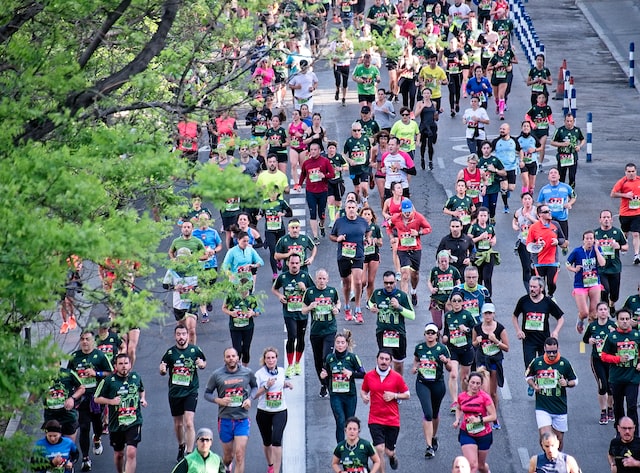
How to Qualify for the Boston Marathon
Share

After months of training to qualify for the Boston Marathon—Chris had put in his long runs, pushed through his tempo workouts, and his taper was flawless—he was ready to run his Boston Qualifier. On the morning of the marathon, he feels good, his legs are unstoppable. He thinks “Maybe I can do even better than just BQ.” The pre-race adrenaline is pumping; his heart is racing. The gun fires and he’s flying. “New PR today!” he thinks to himself as he floats past his BQ pacer. As he finishes mile 9 he starts feeling it—the lead accumulating in his shoes. He slows down to shake it off. By mile 15 he’s barely hanging on. At mile 20 his BQ pacer passes him; there’s no hope of keeping up as he falls further behind.
The wall is real, it’s painful, and it’s upsetting. Months of training feel seemingly wasted. This happens to some 40% of marathon runners (1). The story above happened to one runner who came to us to try out our technology after his disappointing run. Just 3 weeks later he ran another marathon, but this time he was armed with his optimal marathon pace, calculated using his Aerobic and Anaerobic Thresholds measured from Tyme Wear's smart shirt. He maintained the pace throughout the race, finished 15 minutes faster than the first marathon, qualified for Boston, and felt great afterward. He managed to shave 15 minutes off his marathon time, but the first 9 miles were actually 3 minutes SLOWER than in the first marathon. Let's dig into how that works out.

An important thing to appreciate about pacing is that our bodies’ fuel consumption is not linearly related to speed (2). As we go faster, we need to recruit progressively more muscles to sustain the work. This is because as our force and speed requirement increases, our muscles get less efficient at outputting that force, this is called the force-velocity relationship of muscles. As you recruit more muscles, your energy expenditure goes up progressively. This means you only have to go slightly faster than your ideal speed for a given distance to burn your energy too quickly, be forced to slow down and enter a world of pain and regret. On the reverse side, if you go slower than this speed, you’ll have plenty of fuel left in the tank and you won’t reach your full potential. But when a race is run just right, it feels incredible!
The truth is, hitting your wall doesn’t have to happen at all. It’s not an inevitable, foregone conclusion of running a marathon or endurance event. That’s because, for any given distance you have an optimal speed that is defined by your current level of conditioning. This means you have a speed that will get you across any finish line in the least amount of time without hitting the wall.

Knowing your Threshold can give you an accurate prediction of what your max speed is for a given distance. We ran a study with our pilot users, and by using their individual Aerobic and Anaerobic Thresholds, we were able to predict 15 out of 15 marathon performances within 1 minute of their actual results. We have an optimal time for any given distance, and through training, we aim to improve our optimal time. Knowing what we're capable of today can help us execute our best race.
References:
